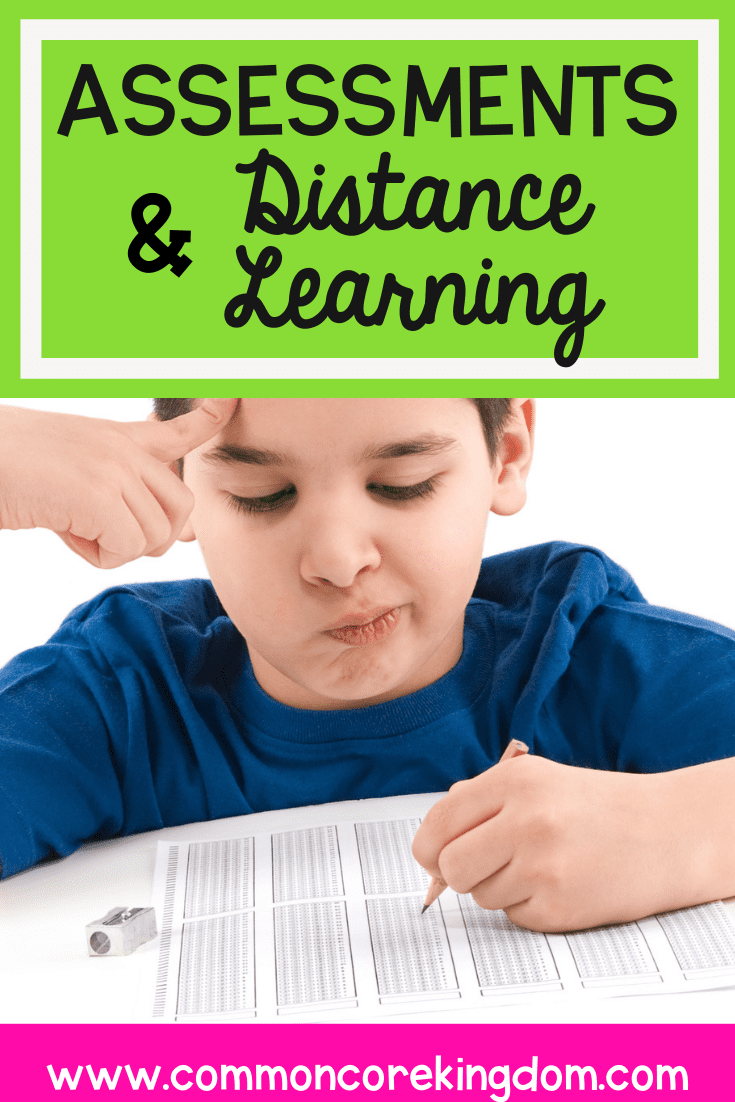One of the big questions I heard from teachers last spring when COVID initially impacted schools was “How am I going to grade my students?” Many teachers were worried that “if students aren’t held accountable for their work, will they be motivated to complete it?” With many schools doing distance learning or a combination of classroom and distance learning, and with the ongoing uncertainty of what this school year may hold, I have been thinking a lot about how to effectively assess students while distance learning.
I regularly used assessments to inform my instruction in the classroom. I know I wouldn’t have been nearly as effective of a teacher if it weren’t for my routine assessments. Don’t get me wrong, I’m not a fan of teaching to a test nor do I believe in heavy standardizing testing. But I do believe in assessing students to track progress and inform instruction. Call me a data nerd, but I actually may be one of the only teachers out there who actually loves testing. And many of my students also looked forward to assessment time. (Again, to be clear – I’m not talking about those dreaded standardized tests. I’m referring only to the assessments that I developed to perfectly aligned with the resources I was using and my instruction).
Knowing how important effective student assessments are to drive instruction, remediation, and differentiation, I’ve been thinking about how to help teachers utilize meaningful assessments both in the classroom and when distance learning. The good news is you can use similar resources and strategies in both settings!
My district used to require us to administer benchmarks three times per year. We HATED these tests for several reasons. They took so much time to administer, tons of time for the district to correct and give us results, and the results were nearly useless to us.
So I decided to develop my own Reading Comprehension Benchmark Assessments. That way, teachers could get valuable data quickly and be able to use that data to inform their instruction.
These benchmarks were carefully developed to include an equal amount of fiction and nonfiction passages. All passages are Lexile leveled to precisely span the entire grade level text complexity band. On top of that, each assessment includes at least four questions for each key skill in that grade, giving teachers a large enough pool to confidently know students’ progress with each skill. On top of that, I ensured each assessment (Beginning, Middle, and End of year) is closely aligned with the others in complexity, so you can be confident you are properly measuring student progress with each assessment.
Best of all, my Reading Comprehension Benchmark Assessments are available in both printable and digital formats. If you decide to assess digitally, the Google Forms are even self-grading! Both digital and printable versions even come with a data-tracking spreadsheet to make analysis quick and easy.
I like to spend about two weeks on each specific skill. After teaching each skill, it is helpful to administer a skills-based formal assessment to ensure students’ understand and can implement the skill. The test results can be used to help form skills-based small groups to provide extra support as needed. These regular assessments also help build good test-taking skills, along with focus and determination for students to check work and do their best.
Choose assessments, similar to those included in my Core Comprehension Series, that offer both printable and digital formats. I like these Google Slides editions because they allow students to highlight or underline text evidence.
Exit tickets are another, less formal, way to assess student progress. I typically use exit tickets at the end of a lesson to ensure students are “on the right track”. Exit tickets are very short, simple questions that students should answer briefly in about five minutes. Using a quick assessment like my Reading Comprehension Exit Tickets can help teachers intervene and check-in with students before it is time for a larger assessment. My exit tickets can also be completed in printable or digital format!
The term “testing” has a negative wrap for many valid reasons, but the truth is that using assessments dynamically can really have a positive impact on your instruction and your students’ success. There really are so many ways teachers can incorporate assessments into distance learning to ensure we provide and modify instruction to meet our students’ needs.

We strive to create resources that empower teachers and transform student success. We create skill-focused resources that promote critical thinking, enhance student engagement, and incorporate diversity. Our goal is to develop the tools teachers need to reach their students and foster a lifetime of learning.

